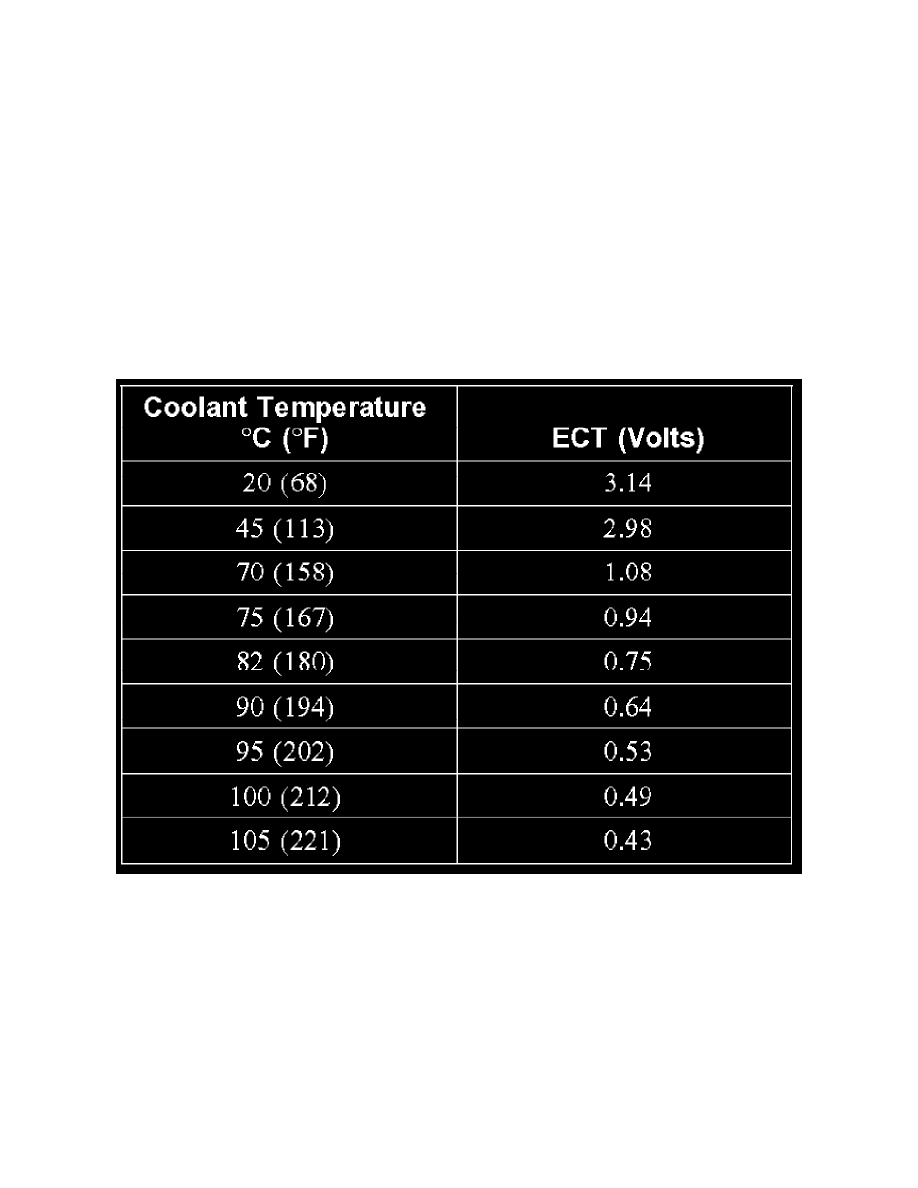Montego AWD V6-3.0L VIN 1 (2005)

Radiator: Testing and Inspection
Thermostat
A new thermostat should be installed only after a thermostat electrical test has been carried out.
Thermostat Electrical Test
NOTE: The electrical thermostat test is most accurate if carried out indoors at less than 37.8°C (100°F) ambient air. This test may be carried out with
or without the hood open and with the engine warm or cold.
1. Check the engine coolant level. Fill as needed.
2. With the ignition OFF, remove the engine coolant temperature (ECT) sensor harness connector and attach ECT Sensor "T" Cable as a jumper
between the powertrain control module and the ECT Sensor. Attach the 73III Automotive Meter to the ECT Sensor "T" Cable. Voltage values (0.5
V) may now be monitored while the sensor retains its connection to the wiring harness.
A Diagnostic tool or the Service Bay Diagnostic System (SBDS) may be used to monitor the ECT. The SBDS sequence to use for the screen is:
Toolbox-Electronic Engine Control and DCL-Item.
3. NOTE: Running this test with the vehicle in gear or with the A/C compressor clutch engaged (running) will cause incorrect diagnosis.
Place the transmission in PARK (P) or NEUTRAL (N).
4. Start the engine and allow the engine to idle throughout this test. Allow the engine to run for two minutes, then record the ECT voltage. Record the
ECT voltage every 60 seconds. When the ECT voltage trend changes direction or only changes slightly (0.03 volt or less) from the previous
reading, record this as the thermostat opening voltage. Use the voltage and corresponding coolant temperature chart listed below.
5. If the thermostat opening voltage is greater than 0.94 volt and less than 75°C (167°F), or less than 0.53 and greater than 95°C (202°F), install a
new thermostat.
6. If the thermostat opening voltage is less than 0.75 volt and greater than 82°C (180°F) or greater than 0.50 and less than 97°C (206°F), the
thermostat is good and a new thermostat should not be installed. GO to Symptom Chart for further instructions.
Radiator Leak Test, Removed From the Vehicle
CAUTION: Never leak test an aluminum radiator in the same water that copper/brass radiators are tested in. Flux and caustic cleaners may be
present in the cleaning tank and they will damage aluminum radiators.
NOTE: Clean the radiator before leak testing to avoid contamination of tank.
